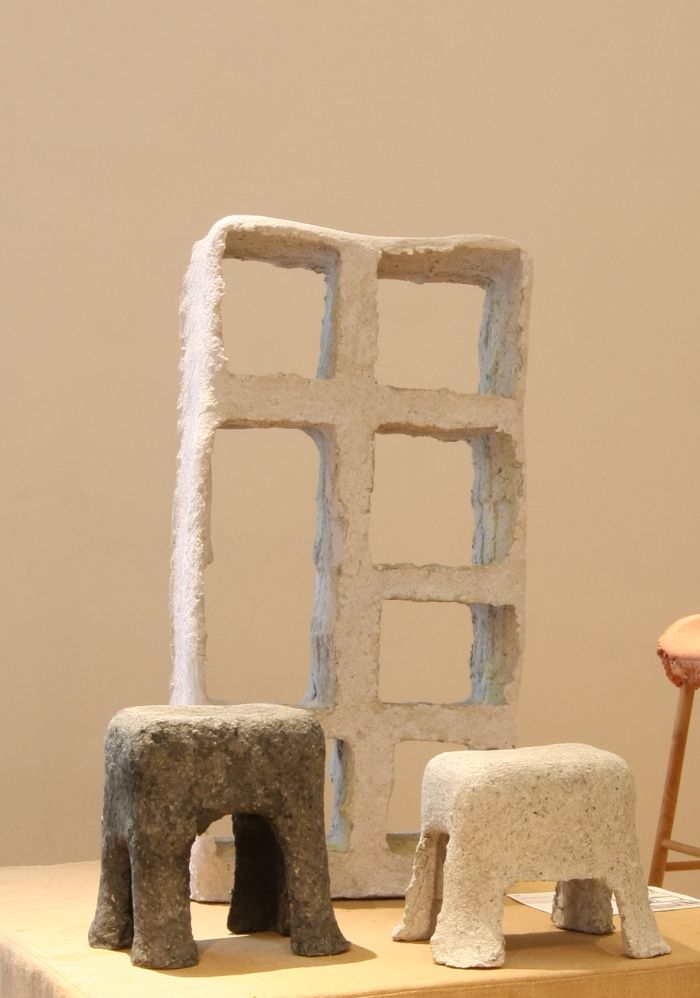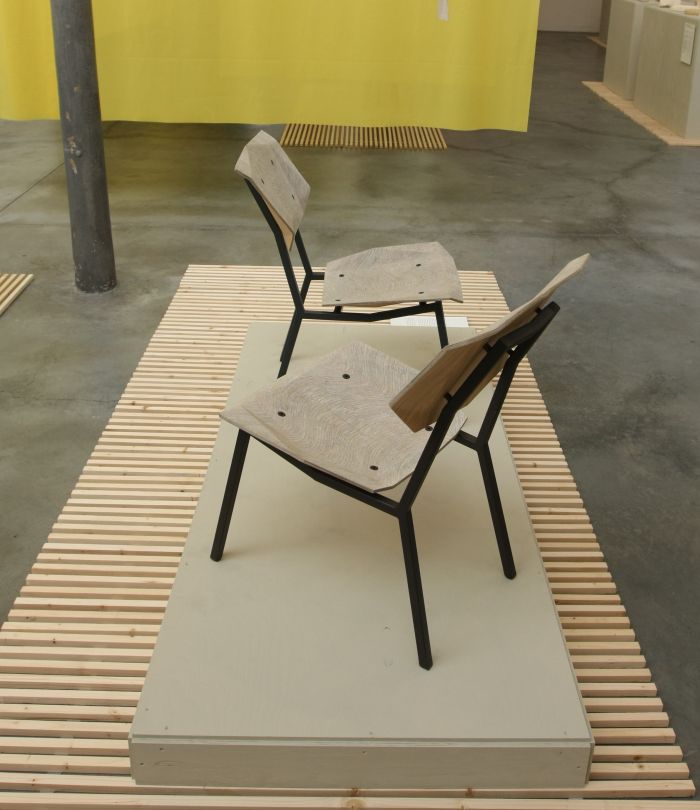One of the inescapable features of our recent #campustour was the number of projects exploring potential, possible, new materials, including, and amongst many others, egg shells, eelgrass and chitosan. Explorations whose relevance and importance was neatly underscored post-tour by the exhibition Pure Gold. Upcycled! Upgraded! at the Museum für Kunst und Gewerbe Hamburg.
Beyond the questions posed by the projects themselves, the experimentation we've seen these past few weeks has increasingly caused us to reflect on a material once tipped as being a potential new future for the furniture industry...... Papier-mâché.
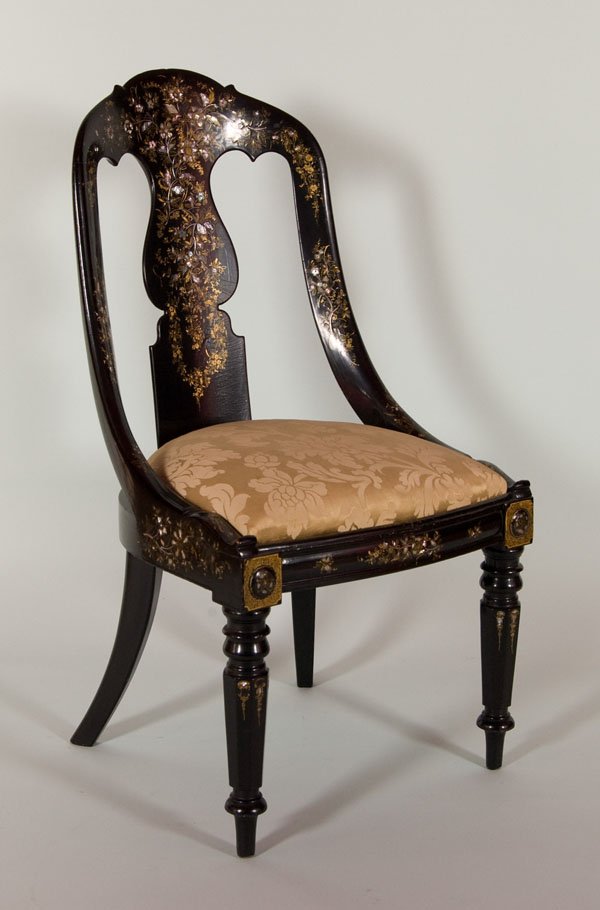
The history of using pulped/mashed paper to create objects is arguably as long as that of paper itself, and would, by all accounts, appear to have its origins in reusing paper scraps: over many centuries paper was a rare and valuable material, thus, and very sensibly, not one that was left to go to waste.
Similarly, the global spread of pulped/mashed paper shadows the paths of trade, war and cultural exchange taken by paper: from China over Asia, Arabia, North Africa and onto Spain and beyond, including to England where in the mid-18th century it acquired its contemporary name.
Whereas popular legend has it that the origins of the term Papier-mâché involves elderly French ladies being forced to chew paper in London backrooms in order to achieved the required consistency, popular legend is here, as so often, wrong. The term's origin lying much more in a pretentious 18th century English fashion for French words, whether one understood them or not: and that the average 18th century Englishman didn't, many mistook the French verb mâcher as "mash" rather than "chew". Other Englishmen, who spoke French, innocently referred to Papier-mâché as "chewed paper", unaware of the original faux-interpretation. And so today we have the confusion. And not Papier-Purée or simply Pulpe
Papier-mâché not only received it's name in England, but also, arguably, achieved it's zenith as a material, or as Charles Frederick Bielefeld noted in 1842, "there is yet very good reason to believe that to England is to be attributed the merit of first applying this substance to important uses"1
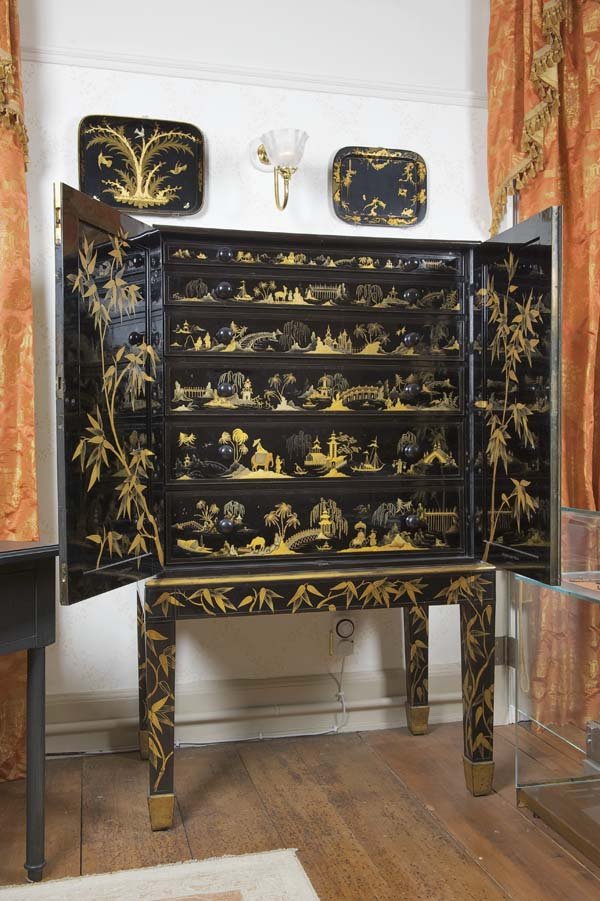
Regardless of which people or culture one examines, Papier-mâché has always been used to create small objects - trays, boxes, pencil cases, picture frames, etc - and in later centuries for architectural features - wall brackets, sconces, cornices, capitols, etc; then in 18th century Europe attention increasingly turned to making furniture from Papier-mâché. Considerations which became particularly interesting with the development of processes for the creation of so-called pasteboard, a particularly stable and strong board created from pressed and glued Papier-mâché sheets and which could be both cut, worked and joined like solid wood or moulded like plywood.
The most important patent in terms of pasteboard was granted to Henry Clay of Birmingham in 1772, and over the following century the English West Midlands became not only the most important centre of European, when not global, Papier-mâché production, but of Papier-mâché furniture production
And lest we forget, this was a good half century before the mass production of plywood board, neigh on a century before Michael Thonet perfected his process for warm wood bending, and a whole century and a half before plastics; thus at the start of the Industrial Revolution in England, furniture makers looking to produce formed and shaped furniture quickly, at relatively low cost and in relatively large quantities had with Papier-mâché a material which offered numerous interesting, commercial, technical advantages.
And one major disadvantage: for all its integral strength and durability, Georgian and Victorian pasteboard didn't posses a high load bearing capacity, and consequently was unsuitable for legs and/or bases, in particular chair legs, thus forcing manufacturers to combine wooden legs with Papier-mâché backrests. And whereas some side table bases did feature full Papier-mâché pedestals with a supporting interior metal bar, in general the use of Papier-mâché was reserved for table tops, seat backrests, wardrobe panels, folding screens, etc, or as a veneer to cover the wooden elements.
That despite this weakness the production of Papier-mâché furniture was practised, and became an important industry in the West Midlands, can be put down to a particular fashion of the period, so-called japanning
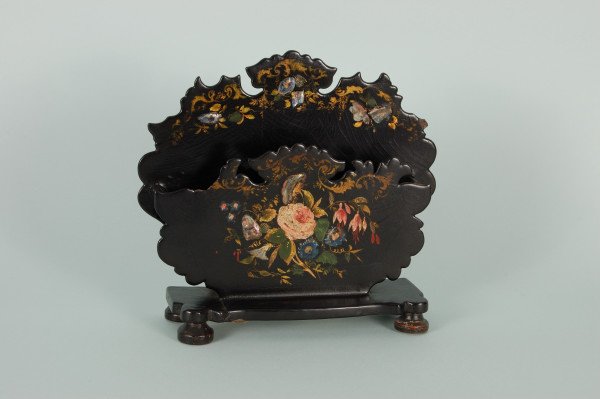
The importation of Oriental lacquer works into Europe began in the early 17th century and instantly became the height of fashion: not only the hard black lacquer, polished and embellished with ornate decoration, but the unusual shapes and forms of the objects, contrasting all too alluringly with contemporary European furniture and accessories. That on the one hand the oriental objects were rare and expensive, something not helped by Japan's self-enforced seclusion from the mid-17th century, and on the other that the lacquer used was unavailable in Europe, European craftsmen quickly set about searching for their own, home-grown, alternatives. Something they, relatively, quickly achieved. That the highest quality Oriental lacquer work was deemed to come from Japan, this copying of the process becoming known as japanning and the resultant goods, Japan ware.
Whereas various materials, including tin and wood could be lacquered, japanning Papier-mâché offered several advantages including a greater durability and a smoother, homogeneous, finish. Or as the jury at the 1851 Great Exhibition in London noted, "Japan ware may be divided into two classes: works lacquered upon wood or metal grounds, and those formed of Papier-mâché; these last are superior to the former being lighter, sounder, and admitting of a more beautiful finish"2
Advantages which combined with the practicalities of using pasteboard made japanned pasteboard a popular material for furniture and which led to a singular episode in the (hi)story of European furniture, and for all to chairs which although in many regards of their period, are also very radical, presenting as they do swinging, flowing, organic forms, forms with a freedom of character and expression. And forms which by traditional carpentry could only be slowly and expensively realised.
If forms which in many cases are almost lost in the monstrosity of the ornamentation. The Victorian japanner having a slight hang to overkill.
If this was on account of some, perceived, commercial advantage, pressure from salesmen, or simply an unhealthy fascination with the process, is a matter for debate; what is clear is that by 1851 even contemporary commentators were starting to tire of it, or as one reads in the Reports of the Juries from the 1851 Great exhibition: "The Jury feel called upon to remark on the redundancy and inappropriateness of much of the ornament applied to the European specimens of Japan ware; and to direct attention to the better examples of this work from Japan and China, where it will be found that in the subordinate parts the ornament is kept subdued and simple, thereby giving more effect to the principle features"3
Consequently, this ornamentation can be held partly to account for the fact that from the later half of the 19th century Papier-mâché's star began to wane, on the one hand as the novelty of it faded, but for all as the fashion for japanning gave way to the more natural, subdued, ornamentation, if equally flowing, organic, expressive tastes of Art Nouveau.
Or put another way, what fashion giveth so fashion taketh away.
There's a lesson in there somewhere.........
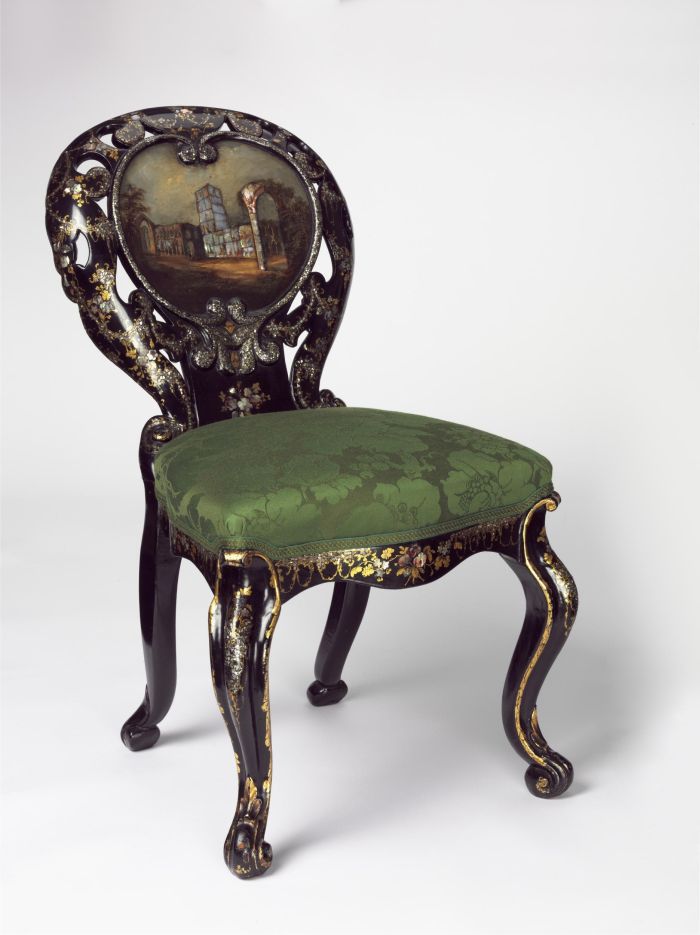
Papier-mâché however never completely vanished, just became less popular, something for children and provincial artists, not for professional designers and architects; however, that is now changing and Papier-mâché, is once again being utilised in contemporary design, Pure Gold in Hamburg featuring projects such as Sandra Böhm's Prei collection which adds kaolinite stone to the mix for increased stability and thus allows for Papier-mâché chair legs; or Mieke Meijer's Newspaperwood, the natural, logical, and eminently elegant, successor to Henry Clay's pasteboard.
Thus Papier-mâché cannot be considered truly lost.
What has however been lost is the popular memory of the experimentation of Georgian and Victorian England, the knowledge of the role it played in the development of furniture design, the understanding of what can be achieved structurally and formally with Papier-mâché, that it needn't be a cheap solution or a formless mass, but can have a grace, an elegance, a value, and that it can be used unobtrusively yet very effectively in furniture construction.
1Charles Frederick Bielefeld, "On the use of the improved papier-mache in furniture, in the interior decoration of buildings, and in works of art" London, 1842
2Reports by the juries on the subjects in the thirty classes into which the exhibition was divided., London 1852
3ibid
And if we can rediscover that lost knowledge, then with our contemporary understanding of materials and production processes, Papier-mâché may still yet be a material whose time is now.
